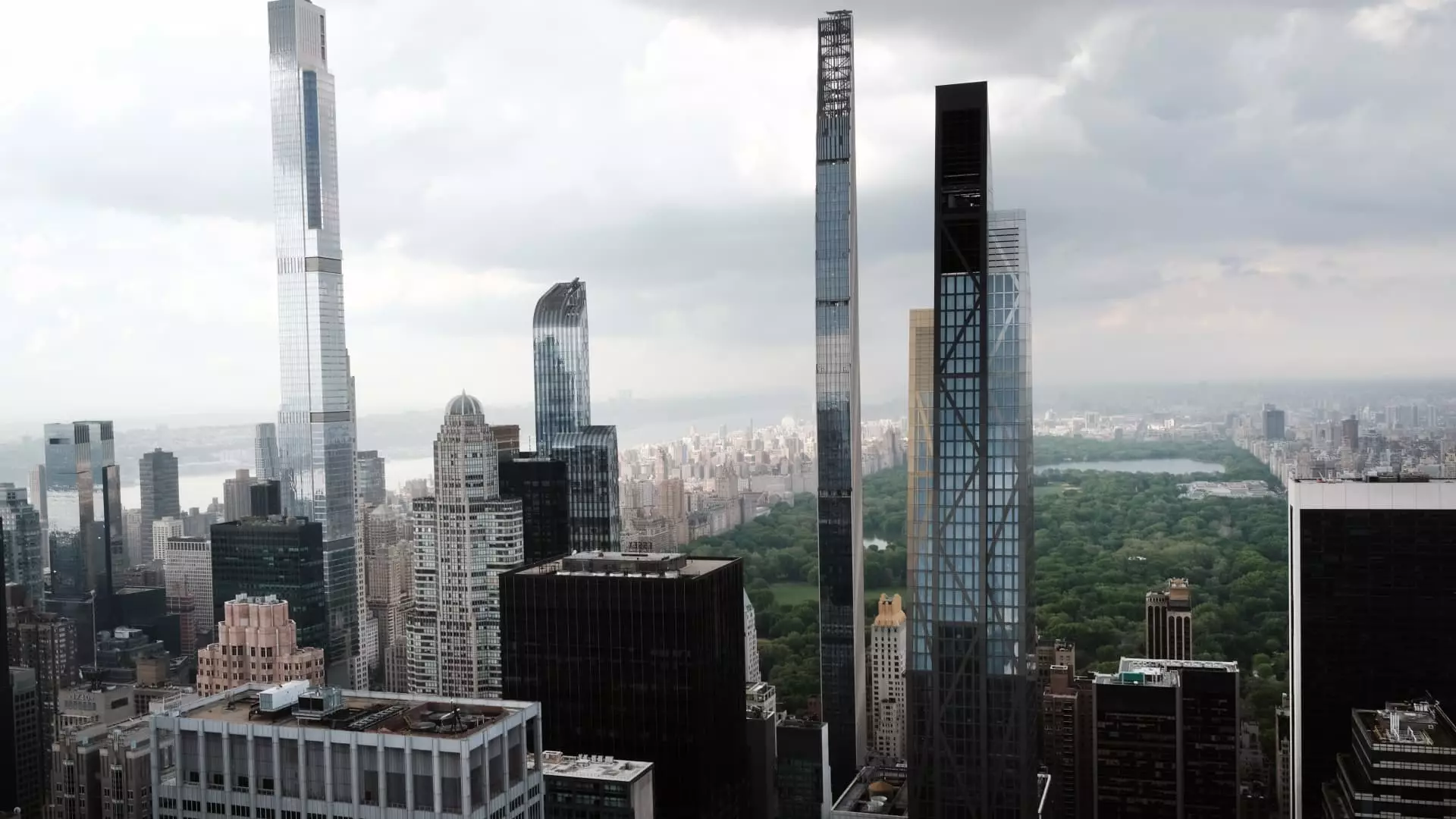It seems that the rich are not just getting richer; they are strategically reshaping the Manhattan real estate market in response to increasing economic volatility. The recent report highlighting a staggering 29% increase in apartment sales compared to the previous year reveals much more than mere numerical growth—it showcases the luxury market’s resilience against financial fluctuations. With 2,560 closed sales amounting to a colossal $5.7 billion in value, the implications are multifaceted. The allure of tangible assets like real estate becomes undeniable when stocks spiral into uncertainty. High net-worth individuals appear to be doing just that: embracing real estate over the shaky terrain of the stock market, as a way to safeguard their wealth and investments.
A Luxury Market Resilience: The Power of Cash
Another compelling facet of this resurgence lies in the overwhelming prevalence of cash transactions. It is remarkable to note that 58% of all sales in the first quarter were conducted without a mortgage. When observing high-end sales—particularly properties priced above $3 million—an astonishing 90% were cash deals. This trend not only minimizes buyer dependence on fluctuating interest rates but also underscores the fundamental shift towards financial autonomy. Despite mortgage rates remaining obstinately high, the ultra-wealthy seem unfazed, contributing to a narrative that casts real estate as a fortress in turbulent financial times. The market is becoming increasingly segregated, where those who can afford to pay in cash are thriving, while the “mid-market” segment seems to be left floundering.
The “Boomerang Wealthy” and the Shift in Demand
What’s interesting is the emergence of the so-called “boomerang wealthy”—individuals who fled the city during the pandemic only to return with a vengeance. As big banks and corporations foster remote working arrangements and invite their employees back, this demographic realizes the allure of Manhattan once more. The continued allure of city life, combined with the tangible desire to return to a familiar ambiance amid uncertainty, is creating a distinct demand for high-priced properties. Reports suggest that movement from warmer climates like Florida back to New York is meritocratic. The city’s inherent charm, culture, and the unmistakable pulse of excitement are drawing affluent buyers back. It poses a question: does real estate refer solely to property, or does it embody a lifestyle that wealthier individuals yearn to reclaim?
The Great Wealth Transfer: A New Generation of Buyers
Perhaps one of the most transformative phenomena fueling this uptick in sales is the “Great Wealth Transfer.” As trillions of dollars begin flowing from the baby boomer generation to their heirs, there is a palpable shift in buyer demographics. We are witnessing an increase in activity from family offices, which are often funded not just by amassed wealth but also through trusts and generational assets. This situation raises an intriguing paradox. On one hand, the rise of young, affluent buyers could further inflate the real estate bubble, while on the other hand, it may provide the market with renewed vigor meant to carry on legacies of wealth through the acquisition of tangible assets, like luxury apartments, that endure beyond financial fluctuations.
The Dichotomy of Market Segments: Opportunities and Risks
Despite the overall positive indicators in luxury apartment sales, it cannot be overlooked that the mid-market segment—properties priced between $1 million and $3 million—declined by 10%. This indicates a bifurcation within Manhattan’s real estate landscape, giving rise to a precarious situation for sellers who fall into that range. It raises the question of whether we are witnessing the erasure of the middle class from the Manhattan housing market. The continued lack of demand naturally results in lowered property values, further complicating the picture. The appeal of luxury real estate is undeniable; however, the fallout for less affluent segments could be significant and detrimental, illustrating the extent to which financial stability in the luxury segment could exacerbate vulnerabilities at the lower end.
Future Predictions: The Outlook for the Manhattan Market
Even with the noteworthy resurgence in sales, broker predictions for the coming months seem cautiously optimistic. The uncertainty that enveloped March—a month typically quieted by financial anxieties—has established an unpredictable backdrop for sales moving forward. The statistics surrounding signed contracts indicate potential sustainability, particularly in the luxury category; however, the fragility of the mid-market raises concerns that should not be overlooked. With historical averages lingering in the shadows, the future remains uncertain, and it is crucial to keep an eye on whether the resurgence in luxury sales is merely a momentary blip or the dawn of a new chapter in Manhattan real estate. As wealthy buyers solidify their purchases, one must ponder the lasting impact of this trend on the city’s economic landscape.

